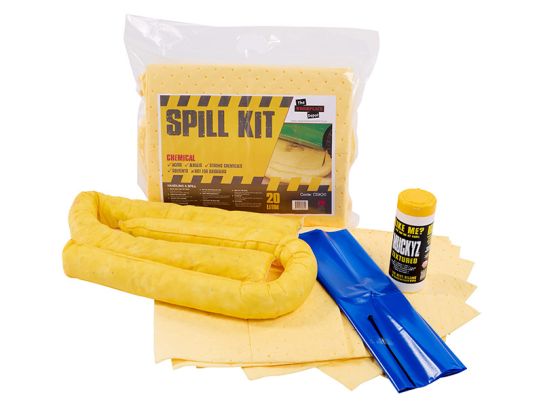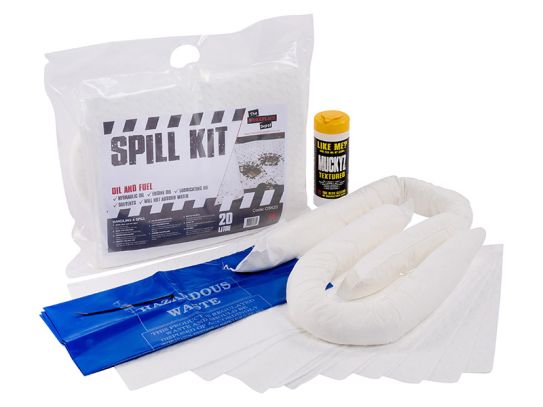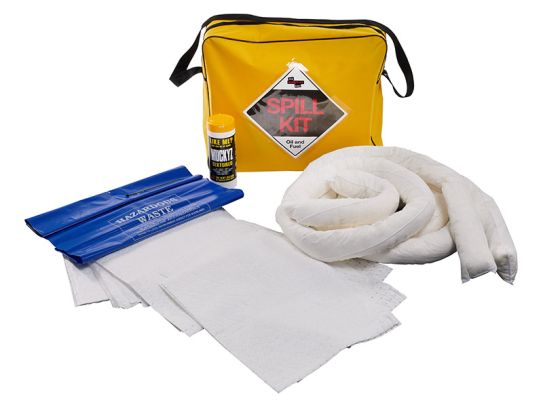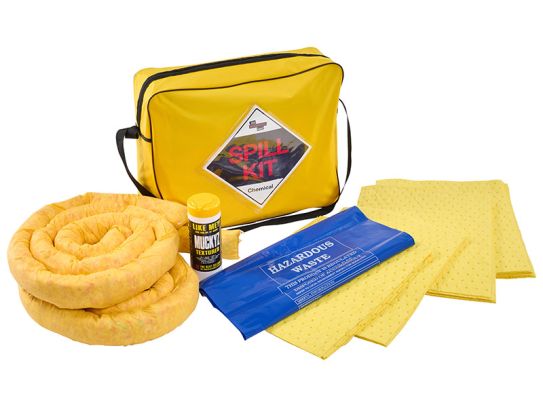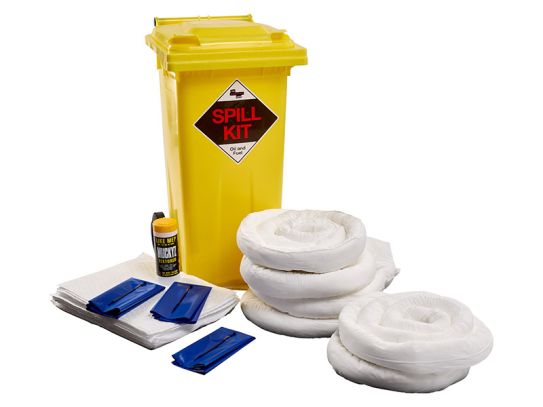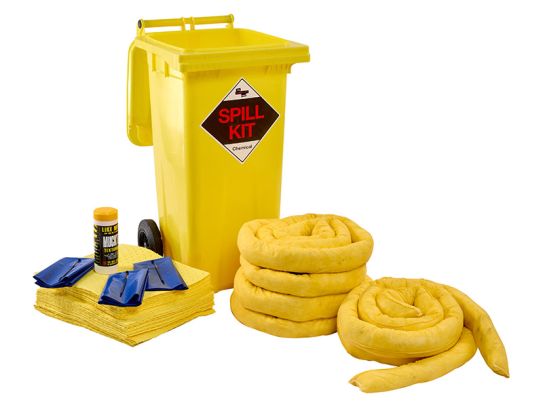Spill Kits
Be prepared for any emergency with our comprehensive spill kits. Our kits include a variety of absorbent materials and tools that can be used to clean up and contain a wide range of liquids, including oil, water, and chemicals. Order now and stay protected in case of any spills.
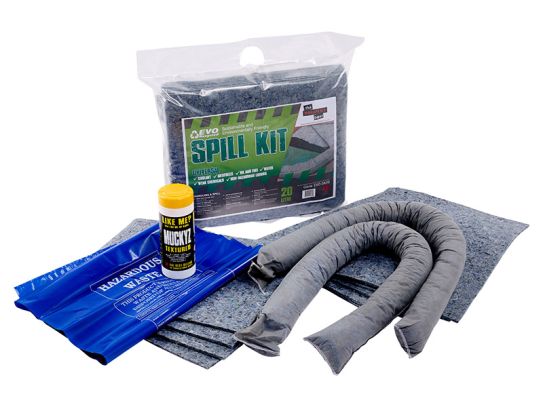
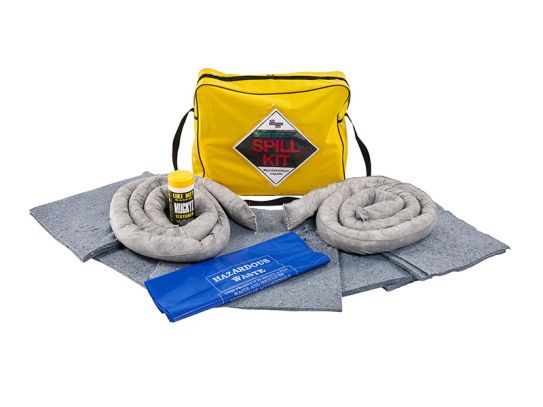
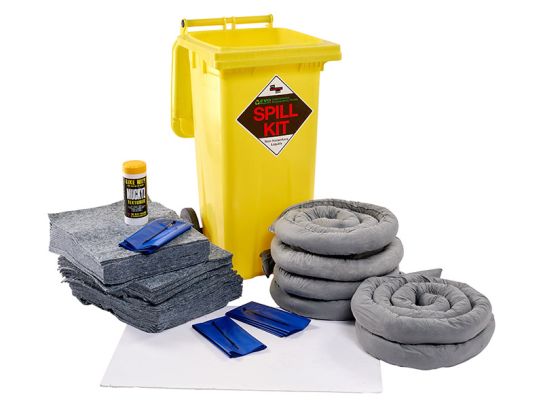
Be Prepared for Any Spill, With Our Comprehensive Spill Kits
Be prepared for any emergency with our range of spill kits. Protect your employees and the environment with our specially designed kits for chemical, oil and fuel, and maintenance spills. Whether it's non-aggressive or aggressive chemicals, oils, fuels, or solvents, we've got you covered. Our absorbent pads, socks, and cushions are available in various sizes to provide the perfect amount of absorbency for any situation. Don't let a spill become a disaster, choose our spill kits today!
What Are Spill Kits?
Spill kits are emergency response kits that contain materials and equipment to clean up and contain spills. They are typically used in industrial and commercial settings to prevent injury to employees and the environment. They often include absorbent materials such as pads, socks, and cushions that can be used to absorb liquids and contain spills. Spill kits also include other tools such as gloves, goggles, and disposal bags. These kits are designed to be used in a variety of settings and for different types of spills, such as chemical spills, oil and fuel spills, and maintenance spills.
What Are Some Common Uses for Spill Kits?
Spill kits are commonly used in a variety of industrial and commercial settings. Some examples include:
- Oil and gas industry: Spill kits are used to clean up and contain spills of oil and other hydrocarbons, such as gasoline and diesel fuel.
- Manufacturing: Spill kits are used to clean up and contain spills of chemicals, solvents, and other industrial liquids used in manufacturing processes.
- Transportation: Spill kits are used to clean up and contain spills of fuel or other liquids that may occur during transportation, such as on ships, trucks, or trains.
- Construction: Spill kits are used to clean up and contain spills of oil, fuel, or other liquids that may occur during construction or maintenance activities.
- Laboratories and Research Facilities: Spill kits are used to clean up and contain spills of chemicals, acids and other hazardous materials used in laboratory and research activities.
- Retail and commercial settings: Spill kits are used to clean up and contain spills of chemicals, oils, and other liquids that may occur in retail or commercial settings, such as gas stations, supermarkets, and warehouses.
What Are the Different Types of Spill Kits?
There are several different types of spill kits, each designed for specific types of spills. Some common types include:
- Universal spill kits: These kits contain a variety of absorbent materials and tools that can be used to clean up and contain a wide range of liquids, including oil, water, and chemicals.
- Oil-only spill kits: These kits contain absorbent materials that are specifically designed to absorb hydrocarbons such as oil and fuel, but will not absorb water.
- Chemical spill kits: These kits contain absorbent materials and tools that can be used to clean up and contain spills of chemicals, acids and other hazardous materials.
- Maintenance spill kits: These kits contain absorbent materials and tools that can be used to clean up and contain spills of oil, fuel, or other liquids that may occur during maintenance activities.
- Personal spill kits: These are small and portable kits which are designed to be carried by employees to clean up and contain small spills that may occur while they are on the job.
- Vehicle spill kits: These kits are designed to be carried in a vehicle and can be used to clean up and contain spills of fuel or other liquids that may occur while on the road.
It's important to note that depending on the specific requirements, some spill kits can be customised and tailored to suit the specific needs of a business or industry.
What Are the Key Features to Consider When Choosing Spill Kits?
When choosing spill kits, there are several key features to consider to ensure that the kit is suitable for your specific needs. Some of the key features to consider include:
- Type of spills: Consider what types of spills the kit is designed to clean up and contain. It's important to choose a kit that is appropriate for the types of liquids that are likely to be spilled.
- Absorbency: Consider the amount of absorbency that the kit provides. This will depend on the size of the kit and the type of absorbent materials included.
- Personal Protective Equipment (PPE): Some kits include PPE such as gloves, goggles, and respirators. These are important when handling hazardous materials.
- Ease of use: Consider how easy it is to use the kit, especially in an emergency situation. The kit should be clearly labelled and the contents should be easy to find.
- Durability: Consider the durability of the kit, especially if it's going to be stored in a harsh environment or used frequently.
- Portability: Consider the size and weight of the kit, as well as whether it comes with a carrying case or bag. This can be important when the kit needs to be transported to different locations.
- Compliance: Make sure the kit you are choosing complies with the regulations of your industry and location.
- Refill options: Consider if the kit has the option to be refilled with the same absorbents or if it needs to be completely replaced.
It's important to have the right spill kit for your specific needs, as it can help you to quickly and effectively clean up and contain spills, thus preventing injury to employees and the environment.
How Do You Properly Store and Maintain the Kits?
Proper storage and maintenance of spill kits is important to ensure that the kits are ready for use when needed and that their contents remain in good condition.
- Store the kits in a dry, cool, and easily accessible location, such as a utility room or garage.
- Make sure to keep the kits away from direct sunlight and extreme temperatures, which can damage the absorbent materials and other contents.
- Keep the kits in a sealed container or in a bag to protect the contents from dust and moisture.
- Clearly label the kits and their contents, so that they are easily identifiable in an emergency situation.
- Regularly inspect the kits to ensure that they are complete and that the contents are in good condition. Replace any missing or damaged items.
- Rotate the absorbent materials in the kit, so that the oldest materials are used first and the newest ones are kept in reserve.
- Keep a record of when the kits were last inspected, and when the contents were last replaced.
- Train employees on the proper use and maintenance of the kits.
By properly storing and maintaining spill kits, you can ensure that they will be ready for use when needed and that their contents will remain in good condition, which in turn can help you to quickly and effectively clean up and contain spills, thus preventing injury to employees and the environment.
What Safety Considerations Should Be Taken Into Account When Using Spill Kits?
There are several safety considerations that should be taken into account when using spill kits, including:
- Personal Protective Equipment (PPE): Always wear the appropriate PPE, such as gloves, goggles, and respirators, as specified by the kit or as required by industry regulations.
- Hazard Assessment: Assess the spill for hazards before approaching. Be aware of any potential risks such as fire, explosion, or toxic fumes.
- Isolation: Isolate the spill area to prevent the spread of the spilled material and to protect people and the environment.
- Ventilation: Provide adequate ventilation to the area of the spill to prevent the build-up of toxic fumes.
- Emergency Procedures: Know the emergency procedures and evacuation routes in case of an emergency.
- Material Safety Data Sheets (MSDS): Be familiar with the Material Safety Data Sheets (MSDS) of the products that are likely to be spilled, so that you know how to handle them safely.
- Handling and Disposal: Follow proper handling and disposal procedures for the spilled material and the used absorbents.
- Training: Make sure that employees are trained on how to use the spill kits and the safety precautions that need to be taken when using them.
It's important to take safety precautions when using spill kits, as spills can often involve hazardous materials that can cause injury or damage to the environment if not handled properly. By taking the necessary precautions, you can help to prevent accidents and ensure that the spills are cleaned up and contained safely.
Are There Any UK or European Industry Standards or Regulations That Apply to Spill Kits?
Yes, there are several UK and European industry standards and regulations that apply to spill kits.
- In the UK, the Control of Substances Hazardous to Health Regulations (COSHH) requires employers to provide suitable and sufficient control measures to protect workers from exposure to hazardous substances. This includes providing spill kits and training on their use.
- The UK also has the Environmental Protection Act (EPA) which requires all spills to be cleaned up as soon as possible and to prevent harm to human health and the environment.
- In Europe, the EU's Seveso Directive regulates the handling and storage of certain hazardous chemicals. This directive requires companies to have emergency plans in place, including spill response procedures and the provision of spill kits.
- The EU's REACH (Registration, Evaluation, Authorisation and Restriction of Chemicals) regulation also requires companies to register, evaluate and authorise the use of certain chemicals, and it also includes provisions for the management of chemical spills.
It is important for companies to comply with these regulations, as non-compliance can result in fines and penalties. It's also important to note that the regulations and standards can change over time, so it's important to stay up to date with the latest requirements.
